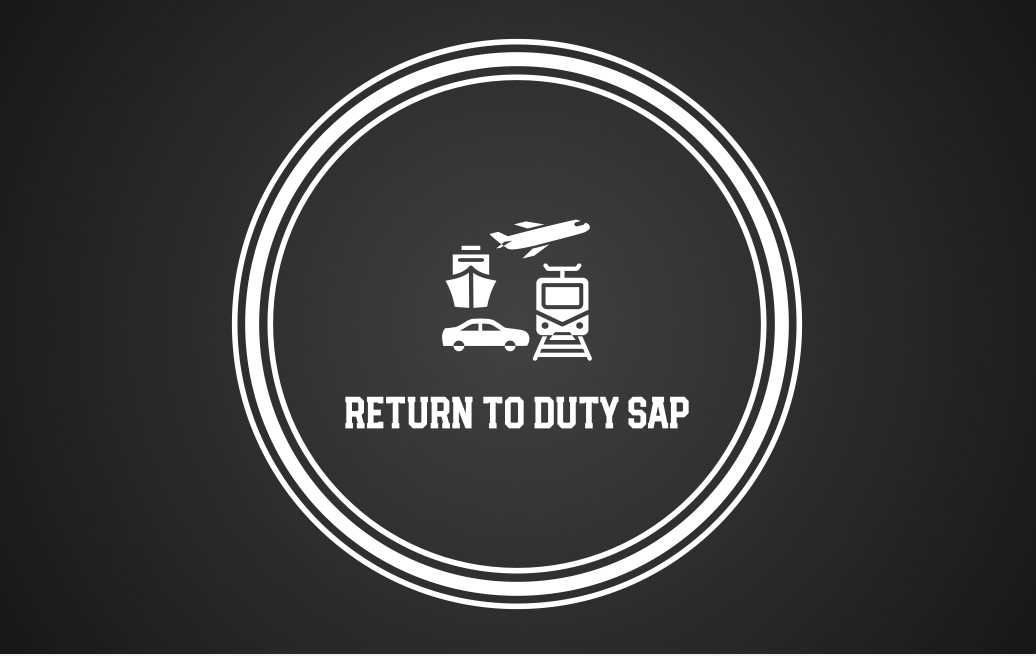In today’s fast-paced world of transportation and logistics, safety is paramount. Behind every mile driven, every cargo moved, and every passenger carried, there are professionals working in safety-sensitive positions whose alertness and judgment are vital. The Department of Transportation (DOT) enforces strict standards to ensure that these workers operate under safe, drug-free conditions. However, despite best intentions, some employees fall short due to drug or alcohol-related incidents. When such a DOT violation occurs, it leads to an immediate removal from safety-sensitive duties. Yet, the system does not leave individuals stranded. Instead, it provides a comprehensive roadmap to rehabilitation through the DOT SAP process, which includes evaluation, treatment or education, and a structured return to duty approach.
The Substance Abuse Professional (SAP) program is the DOT’s official mechanism for helping employees return to work responsibly after violating drug or alcohol rules. It is not simply a procedural step to check off—it’s a regulated, federally mandated process designed to assess, treat, monitor, and ultimately determine whether an employee is safe to return to duty. This system reflects both compassion and accountability. For the individual, it is an opportunity to rebuild trust and regain employment. For the employer, it’s a method to ensure safety, compliance, and peace of mind in the workplace.
Understanding the entire journey—from initial evaluation to final clearance—is essential for anyone navigating a DOT violation. Whether you’re the affected employee or the employer seeking clarity, this article offers a thorough walkthrough of the DOT SAP process, including how the DOT SAP evaluation, return to duty test, and follow-up requirements form a complete and coherent path back to professional functionality.
When a DOT Violation Happens
A DOT violation can occur in several ways, but most commonly it happens when an employee fails a random, post-accident, or reasonable suspicion drug or alcohol test. A violation can also result from refusing a test, tampering with a sample, or testing above the legal blood alcohol concentration limit while on duty. Once a violation is confirmed, the employee is immediately removed from any safety-sensitive functions under DOT jurisdiction. This is a federal requirement and is enforced regardless of the employer’s personal policies or opinions.
The violation is also recorded in the FMCSA (Federal Motor Carrier Safety Administration) Clearinghouse, a secure online database that tracks DOT drug and alcohol program violations. Once entered, this record flags the employee’s status as “prohibited,” meaning they are legally barred from performing DOT-regulated duties until they complete the SAP process and pass a return to duty test.
For many, this moment is a professional low point, often filled with confusion, fear, and uncertainty about the future. Fortunately, the DOT SAP program is designed not just to enforce consequences, but also to provide a structured path forward.
The Importance of the DOT SAP Process
The DOT SAP process exists to ensure that transportation workers who have made a mistake can earn their way back into their roles—safely and responsibly. It is based on the principle that individuals can recover, learn, and return to the workforce if provided with the right support and accountability. The system is rooted in public safety but also recognizes the dignity and potential of each worker.
At its core, the SAP process requires employees to engage with a certified Substance Abuse Professional, undergo a DOT SAP evaluation, and complete whatever treatment or educational requirements are determined appropriate. From there, the employee must prove compliance, take a supervised return to duty test, and undergo follow-up testing after resuming work. Each of these steps is federally mandated and must be documented to ensure compliance with DOT rules.
For employers, the SAP process offers protection from liability while also allowing the possibility of welcoming back experienced staff who have demonstrated a commitment to compliance. For employees, the process is a second chance—an opportunity to restore credibility and rebuild their career.
Step One: DOT SAP Evaluation
The journey toward reinstatement begins with a formal DOT SAP evaluation. This assessment is conducted by a certified SAP who has been trained and authorized under DOT rules. The purpose of the evaluation is to assess the extent of the substance use issue and recommend the appropriate next steps. It is a thorough process that takes into account the individual’s personal history, workplace behavior, substance use patterns, and risk factors.
The evaluation is conducted either in person or via a secure virtual session. During the meeting, the SAP will ask questions about the incident that led to the DOT violation, explore prior use or dependency issues, and assess readiness for change. The SAP may also inquire about any co-occurring mental health issues, life stressors, or past treatment experiences.
Based on the results of the evaluation, the SAP develops a personalized recovery plan. This plan may include substance abuse education, counseling, outpatient therapy, or more intensive rehabilitation programs. The SAP will provide written documentation detailing what the employee must complete to move forward.
This evaluation is not something that can be bypassed or challenged. It is the cornerstone of the SAP process, and all subsequent steps depend on the SAP’s recommendations being followed precisely.
Completing the Required Treatment or Education
Following the evaluation, the employee must complete all recommended programs exactly as outlined. This step is essential—not just for compliance, but for real behavioral and psychological recovery. The recommendations vary depending on the severity of the situation. For some, it may be a brief educational course about substance abuse awareness. For others, it may involve attending weekly outpatient counseling or undergoing an inpatient program.
What matters most is full participation and honest engagement. The goal is not only to meet the requirements on paper but to genuinely reflect, grow, and address the underlying issues that led to the violation. This phase often helps individuals build healthier coping strategies, understand their risk factors, and prepare mentally and emotionally for re-entry into the workplace.
Once the program is complete, the treatment or education provider sends documentation to the SAP. Only when the SAP receives verification that the employee has successfully fulfilled all requirements can the process move to the next step.
Follow-Up Evaluation by the SAP
With the program completed, the SAP schedules a follow-up session to assess progress. This is a critical checkpoint in the DOT SAP process. During this second evaluation, the SAP reviews documentation, discusses the employee’s experience, and evaluates their overall fitness to return to safety-sensitive work.
The SAP considers several factors during this evaluation—whether the employee followed all instructions, participated meaningfully, showed behavioral improvement, and has a realistic plan for avoiding relapse. If the SAP is satisfied with the outcome, they issue a written recommendation clearing the individual to proceed to the return to duty test. This document is essential for the next phase of the process.
Additionally, the SAP will outline a follow-up testing schedule. This testing plan includes unannounced drug and/or alcohol tests over a period of one to five years, depending on the SAP’s recommendation.
Taking the Return to Duty Test
With SAP clearance in hand, the employee becomes eligible for a supervised return to duty test. This test must be conducted by a DOT-approved testing center and is administered under direct observation to ensure integrity. The employee must produce a negative result in this test to return to any DOT-regulated duty.
This is a make-or-break moment. A failed return to duty test results in starting the entire SAP process over again, including a new evaluation and possibly additional treatment. A passed test, however, allows the employee to resume work immediately, assuming the employer is prepared to reinstate them.
Once the test is completed and the result is negative, the employer (or the third-party administrator) must update the FMCSA Clearinghouse. The employee’s prohibited status is then removed, and they are allowed to return to work.
Follow-Up Testing and Ongoing Monitoring
Even after returning to work, the process isn’t over. The SAP will have created a follow-up testing plan that the employer must implement. This plan is designed to monitor ongoing sobriety and includes unannounced tests that are spread out over a defined period—often beginning with six tests in the first 12 months, and continuing as needed for up to five years.
This follow-up testing ensures continued compliance and accountability. It is also a powerful deterrent against relapse and helps maintain workplace safety. Employers are required to follow the plan exactly as written. Any deviation or failure to conduct tests can result in serious DOT penalties for the employer.
For employees, this testing plan reinforces a long-term commitment to sobriety and professionalism. Completing the testing period successfully is often a point of pride and a sign of lasting behavioral change.
Navigating the Process Without an Employer
In some cases, individuals begin the SAP process before they’ve secured a new job or after being terminated. This can complicate the logistics but doesn’t prevent progress. Employees can still initiate a DOT SAP evaluation independently. They can complete the treatment or education requirements, undergo a follow-up evaluation, and be cleared for a return to duty test.
Once they are hired by a new DOT-regulated employer, they must provide documentation of their SAP completion and follow-up testing requirements. The new employer is then responsible for conducting the return to duty test and implementing the follow-up testing plan.
This path is common among self-employed drivers or those seeking new opportunities and reflects the flexibility built into the DOT system for fair re-entry.
Conclusion
The road back from a DOT violation is not easy—but it is navigable, structured, and designed with both public safety and individual dignity in mind. The DOT SAP process offers a meaningful way for workers to earn their way back into safety-sensitive roles through accountability, education, and support. By undergoing a professional DOT SAP evaluation, completing recommended recovery steps, passing the return to duty test, and committing to follow-up testing, individuals demonstrate that they are ready and capable of returning to duty.
Related Reads
- Custom Fitness App Development: Build the Fitness App Your Users Actually Want
- Can an eCommerce SEO Company Get You to Show up in the AI Search Feature?
- Top 7 Trade Show Booth Construction Companies in Houston
- How to Choose the Right Office Moving Service for Your Business?
- Spin Wheel for Quick Decisions – Streamline Your Choices with Yes or No Decision Wheel
- The Final Step Most People Forget After Renovating



